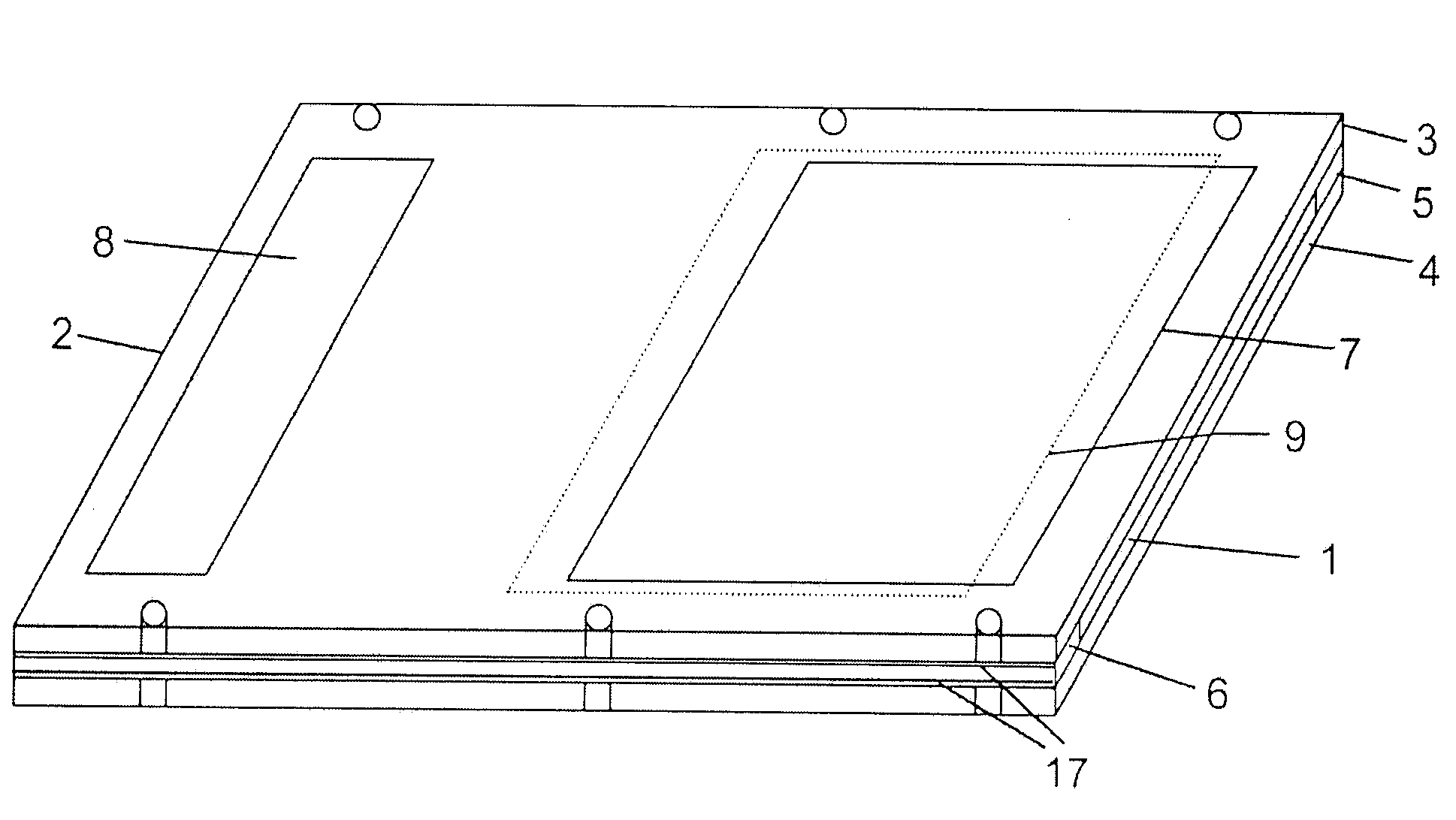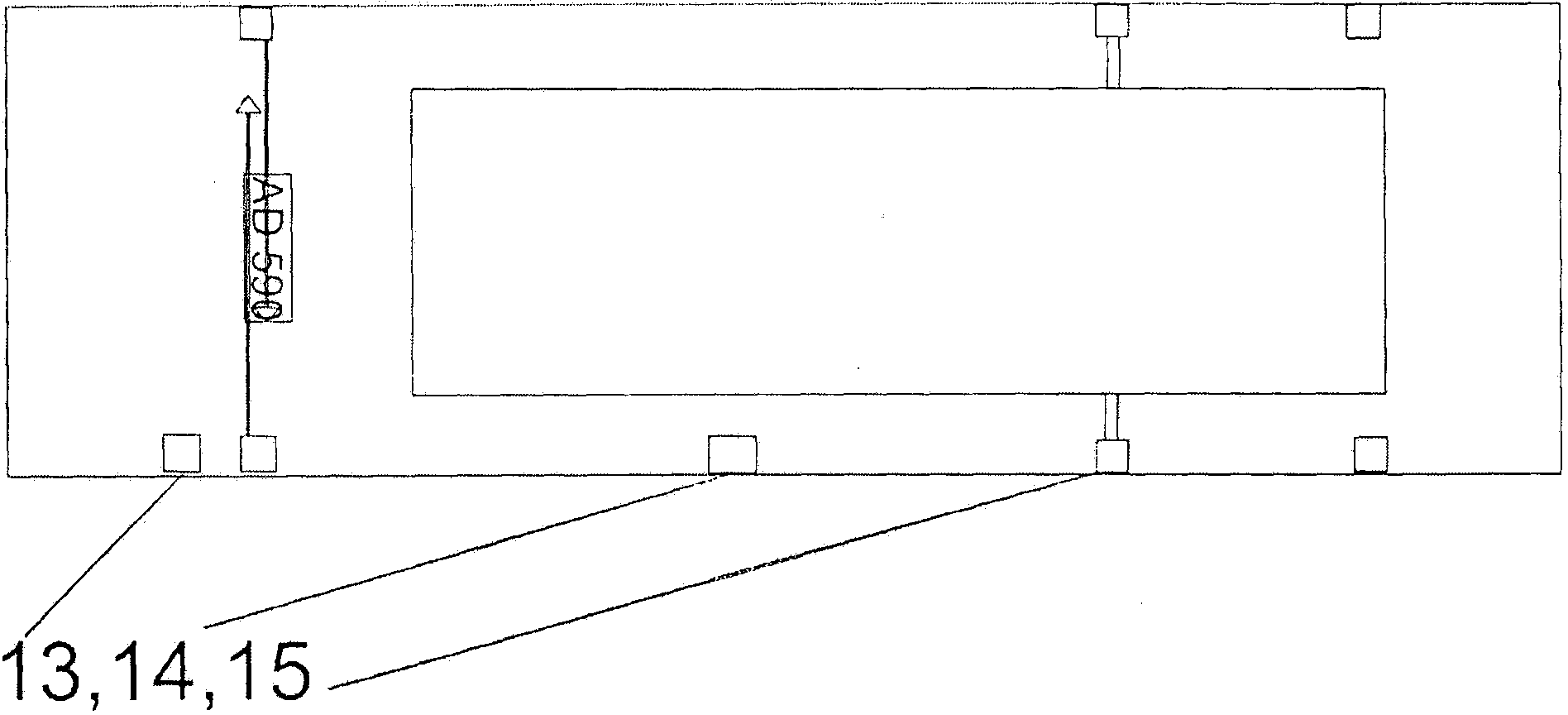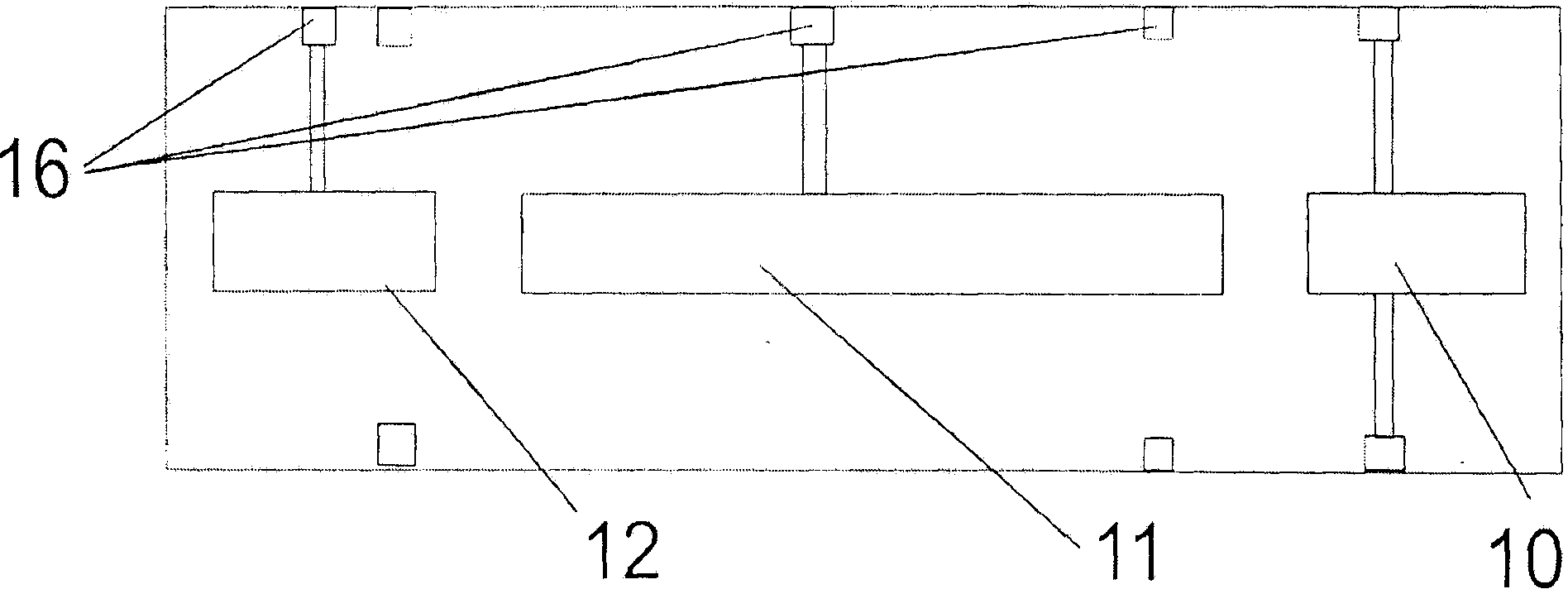Ion mobility spectrometer chamber
An ion migration and spectrometer technology, applied in the field of devices for detecting chemical pollution, can solve problems such as the inability to ensure airflow temperature stability
- Summary
- Abstract
- Description
- Claims
- Application Information
AI Technical Summary
Problems solved by technology
Method used
Image
Examples
Embodiment Construction
[0014] The spectrometer cavity with inlet 1 and outlet 2 for the analysis gas is composed of 4 ceramic plates, the top plate 3 and the bottom plate 4 and two plates 5 and 6 with gaps to ensure the air tightness of the cavity and the gap between the top and bottom plates. The distance is fixed. The ceramic plate is made of 96% Al2O3. The thickness of the top and bottom plates is 1 / 40", and the thickness of the board with voids is 1 / 100". On the outer surface of each of the ceramic plates of the top plate 3 and the bottom plate 4, there is a thermal resistor 7 and a temperature sensor 8. The thermal resistor 7 is made of a ruthenium dioxide layer attached to the ceramic plate to form a resistance layer. The above resistor has an electronic board and amplifier 9.
[0015] On the inner surface of each of the ceramic plates of the top plate 3 and the bottom plate 4, sequentially, starting from the gas port: ionization electrode 10, HV electrode 11 and collecting electrode 12, the io...
PUM
 Login to View More
Login to View More Abstract
Description
Claims
Application Information
 Login to View More
Login to View More - R&D
- Intellectual Property
- Life Sciences
- Materials
- Tech Scout
- Unparalleled Data Quality
- Higher Quality Content
- 60% Fewer Hallucinations
Browse by: Latest US Patents, China's latest patents, Technical Efficacy Thesaurus, Application Domain, Technology Topic, Popular Technical Reports.
© 2025 PatSnap. All rights reserved.Legal|Privacy policy|Modern Slavery Act Transparency Statement|Sitemap|About US| Contact US: help@patsnap.com



